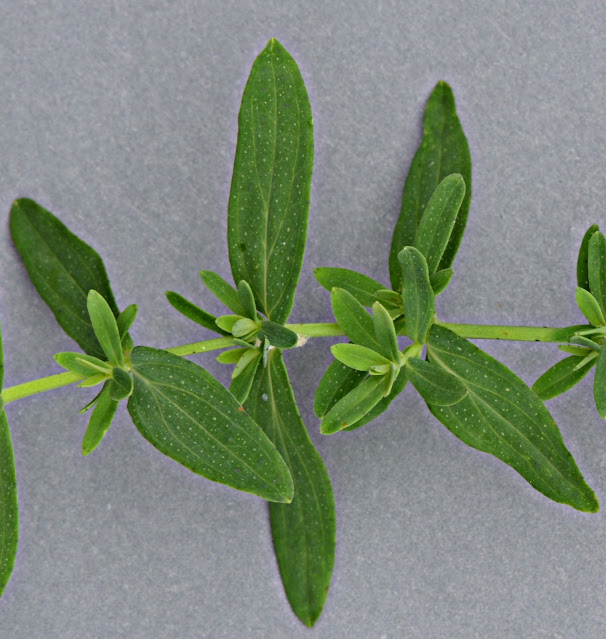This plant has a cool name, and while many of its generic siblings are native and well-mannered, this species is non-native and invasive. It seems to be more of a problem in other states than Indiana, and I've not seen it taking over any areas, but descriptions from other states sound like it can be a big problem.
An unusual problem with it is that when eaten in quantity, it will make an animal hypersensitive to the sun, resulting in sunburns. This can be very difficult problem for range animals.
Medicinally, this plant has been used for centuries to treat a whole variety of problems, internal and external, which is probably why it was brought to America in the first place. In fact, it is being studied as a treatment for COVID. There are two compounds, hypericin and hyperforin, that account for the wide variety of effects this plant has on the body. All of the Hypericum species have some of each, but Hypericum perforatum has the most and has been analyzed and studied extensively by the scientific community, with results showing that it is likely a good herbal treatment for a number of issues.



No comments:
Post a Comment